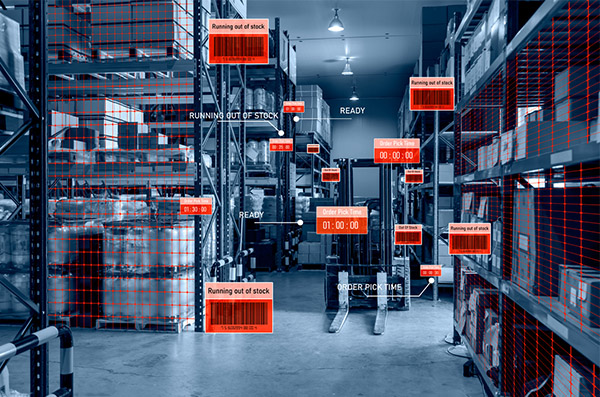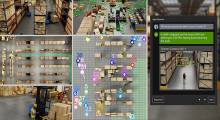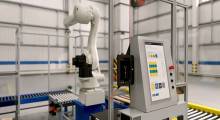ResGreen Group International Inc. last week introduced SimuPath, a simulation program intended to improve manufacturing and warehouse productivity. It uses Unreal Engine to create 3D representations of facilities that accurately reflect their physical dimensions and structures.
SimuPath's artificial intelligence can help determine the best routes for material handling, and it relays the information to ResGreen's BigBuddy, PullBuddy, and LilBuddy robots, said ResGreen. It can also send data to other agents in the virtual environment, such as drones or human workers, the company said in a release.
“By leveraging AI, robotics, and high-powered game engine simulations, we are creating a future-ready solution for our customers that not only significantly improves their current operations, but also offers a new vision of how effective and efficient their assembly, delivery and picking processes can be,” said Parsh Patel, CEO of ResGreen. “We are confident that our SimuPath program will set new benchmarks in cost-effectiveness and place our clients at the forefront of their industries.”
SimuPath offers two modes
ResGreen said SimuPath will be available in two simulation modes:
Mode A – Fixed Structure: This mode presents a static, digital replica of a warehouse or plant, with elements such as racks, storage containers, and machinery firmly set in place. The AI algorithms then process the facility’s current arrangement and devise the most efficient pathways for movement, said the company.
The program analyzes numerous factors, including shortest paths, product weight, and frequency of access, to determine the optimal routes. This mode is particularly beneficial for existing facilities that have numerous fixed structures that cannot be moved, ResGreen noted.
Mode B – Full Simulation: SimuPath's full simulation mode is more dynamic and interactive and enables materials to be moved around a facility according to specified rules.
In this mode, SimuPath reconfigures the facility by shuffling the position of objects and equipment to achieve maximum efficiency, according to ResGreen. This model encourages a fluid and adaptive approach to manufacturing and warehouse management.
SimuPath also features a playback mode that allows customers to get a firsthand of how the program will improve their operations in a simulated 3D environment. By using a virtual reality (VR) headset, the immersive experience can show AI and robotics increasing productivity and accuracy, while reducing human errors, the company explained.
YOLO to help with inventory management
ResGreen last week also announced its “You Only Look Once” or YOLO algorithm for identifying low-stock or vacant storage areas.
“YOLO’s renowned real-time, single-pass, object-recognition framework lays the foundation for predictive analytics, dynamic resource allocation, and continuous operational improvement – putting us at the forefront of intelligent manufacturing and warehouse management,” said Patel.
The system offers sub-milisecond detection, shares data for inventory oversight, and can track the stocking of multiple objects concurrently, said the company. Users can also configure its sensitivity or granularity level and get predictive models for automated replenishment planning.
About ResGreen
Shelby Township, Mich.-based ResGreen Group International Inc. (RGGI) claimed that it is a pioneer in the “convergence of Industry 4.0 and the human-centric principles of Industry 5.0, revolutionizing manufacturing with cutting-edge mobile robots and AI.”
The company's stated mission is “to bring these technologies to small and medium companies, bridging the gap with industry giants.” It said it integrates multi-platform communication, optimizing workplaces with AI, simulations, and collaborative human-robot interfaces.
ResGreen also offers to simplify robotics integration, offering support and training. It said its experienced team aligns with the Internet of Things (IoT), cloud computing, and analytics standards. By combining technologies, the company said it can help businesses be competitive by boosting productivity, reducing costs, and enabling data-driven decisions.
Article topics
Email Sign Up
















